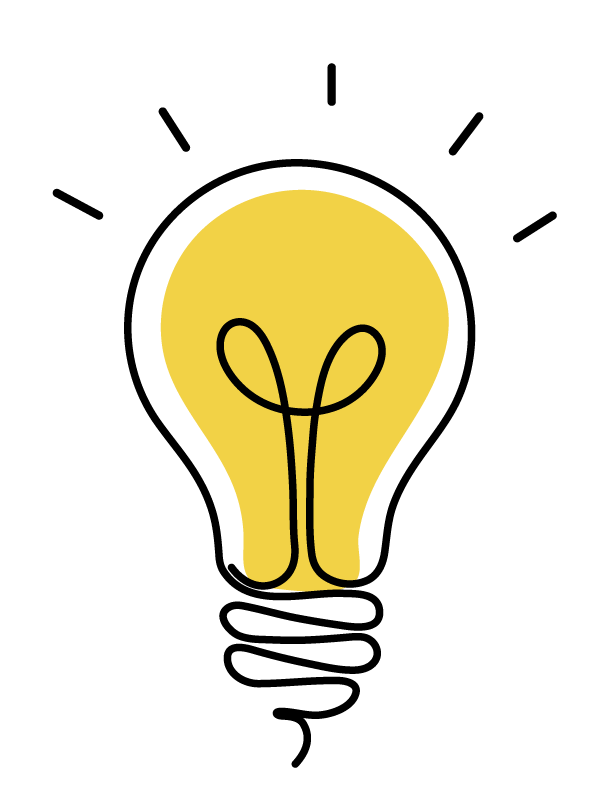The third stage of the process moves from ideating to planning for execution. During this stage, team members will decide on and frame content, and begin to think about dissemination and implementation. This is where the rubber hits the proverbial road and where the facilitator should anticipate the possibility that when confronted with the actual work of production, the team may need to revisit Stage 2 decisions. The team may also feel during this stage that they need to engage additional partners or experts to support the design process. For these reasons, Stage 3 can be complicated for facilitators to plan and lead.

The goal:
Plan the timeline for the project, the team (experts), partners, and how success will be measured.
The participants:
Team Members:
Researcher, Designer, Facilitator, Practitioners
Optional:
Partners, Experts
During Stage 2, the team may have identified that they will need additional experts or partners to support this work. These individuals can be brought into Phase 3 to develop a realistic and effective plan.

PRO TIP
Bringing in new members should be built into the timeline. This means the facilitator should help members (ideally before the meeting) get up to speed by sharing information and resources from prior phases as well as allocating time during the meeting for introductions and community building activities.
The deliverables:
-
Scope and Schedule Planning
-
Initial Dissemination Plan
-
Meeting notes
Tools for this Stage:
Suggested stage plan
Plan the meeting
As always, schedule a time that works for your team. Balance the time needed to work through the goal of this phase against availability and fatigue. We recommend a minimum of 2.5 hours for this phase of the work, and more if there are new team members to onboard.
Optional: The facilitator, based on their perception of team background knowledge, may want to include the Framing the Research tool and Best Practices in Dissemination Guide in communication with the team to give them an opportunity to preview and become familiar with key points that might inform the discussion.
Prepare and share an agenda that lays out the purposes for the session, the anticipated outcomes, and the resources the team will use to achieve them.
SAMPLE:
Meeting Agenda
0:00-0:10 Introductions and overview of session
0:10-0:25 Team building activities
0:25-0:35 Review and affirm decisions from Stage 2
0:35-1:05 Content planning: Framing
1:05-1:15 Break
1:15-1:25 Content planning: Design considerations
1:25-1:40 Dissemination planning
1:40-2:05 Draft Scope and Schedule
2:05-2:20 Reflect on Scope and Schedule
Reference the Progress Recentering Tool, revise as needed**
2:20-2:30 Debrief and next steps
*Note that these times are minimum suggested times and many teams, particularly newly convened teams, may benefit from longer discussions of these issues.
**Note: This may mean returning to Stage 2 decision-making.
Team building
Facilitators should continue to build and sustain trust. This phase requires conversations about skills and commitments from team members which are made easier if people are comfortable with one another. Consider where your team is in terms of trust and openness, and choose activities that support equitable power relations and allow people the space to speak honestly.
Review and affirm decisions from Stage 2
Whether or not there are new team members, it may be helpful to restate both the decisions and their rationales for the prior stage. Re-sharing meeting notes and tools and asking for any clarifying questions gives the team a chance to return to their shared understanding of the work before moving forward.

PRO TIP
Watch for signals that team members are unclear or uncertain about decisions. Keep an eye out for cases where most members are ready to move on and only one or two feel uncertain and may be unlikely to speak up. Affirm the importance of their concerns for the whole team and create time and space to revisit issues if needed.
Content planning: Framing messages
The next activity helps team members decide on how to communicate key messages in ways that meet audience needs and match their goals and values. This builds on our audience activity in Stage 2 and continues your practice of designing with the user in mind.
The Framing the Research tool consists of tools you as the facilitator might use to engage the group in this activity. There are short options and much longer options. Shorter options might be a good fit for within the meeting format. Longer options could be a homework assignment for the team, leaving meeting time to develop frames based on what they learned. As with many choices in this process, you as facilitator should choose what’s best for your team, their goals, and constraints on the process.
Content planning: Review design requirements
Once the team is ready to move on, the last step in this stage is to review the Design Principles and Considerations resource. This document ensures that the team members are aware of and support key design issues, such as branding, copyright and intellectual property; authorship and ownership; and other issues that come into play during the design process. The facilitator should work through the sheet with the team, documenting decisions or requirements along the way.
In the event that information is not immediately available (e.g. a team member needs to find out more information about branding guidelines from their organization), the facilitator should arrange to follow up and communicate the final set of information to the whole team.
Plan for successful mobilization
Before wrapping up, the team should imagine what success will look like. What are some of the ways they can mobilize the product? How will the audience find out about it? How will you know if you are achieving your goals?
The facilitator should first review the Best Practices in Dissemination tool and prepare to facilitate the conversation. They may also choose to share the guide with the team in advance of the meeting, if they feel background knowledge could be helpful.
The team can develop an initial dissemination plan by starting to work through the Engagement & Dissemination Planning Guide. Note that this tool is used in both Stage 3 and Stage 7.

Draft a scope and schedule
Map out the plan for developing and mobilizing the product. This includes mapping out each aspect of the work from design and content development to piloting and dissemination, as well as who is going to contribute what.
You may find the Scope & Schedule Planning Sheet to be a useful resource for this step.

PRO TIP
To promote distributional equity, tasks and responsibilities should distributed to avoid overburdening any individual or group and to ensures that each participant contributes to and benefits from the process. The facilitator can help the team to recognize imbalances and address them in the plan.
Reflect on decisions with your (Re)centering Tool
Take time to consider the viability of the draft plan, using the most recent version of the team's (Re)centering Tool to facilitate this conversation. The facilitator should have a copy of this tool ready for use by the team at this stage.
Confirm with the team whether new members should be added to bring necessary resources or expertise. For example, perhaps the communications designer needs support from a website designer or graphic artist to achieve the vision for the project. Or perhaps, the team has identified an intermediary partner (e.g. a national organization) to help meet audience needs and effectively reach intended audiences.

PRO TIP
Make sure you explicitly consider engaging those who can help your work reach traditionally marginalised members of your audience. For example, speak to members of these communities, or engage an expert in equity, diversity and inclusion.
The facilitator should lead outreach and help members (ideally before the next meeting) get up to speed by sharing information and resources from prior phases.
Note that at this juncture, the team may discover they need to return to Stage 2 as a result of identifying concerns in the (Re)centering Tool. The facilitator should have Stage 2 resources available and be ready to support the team in revising those decisions.

PRO TIP
Teams may have mixed feelings about returning to Stage 2 or disagree about the feasibility of the drafted plan. Skillful facilitation gives space for all team members to express their opinions (provided they do not infringe on the safety or rights of others) and validates them as important for everyone to consider. Ideally, the facilitator can help the team come to agreement about next steps but may need to help the team negotiate a compromise that is acceptable.
Wrapping up
Finally, it is important to ensure the team has a shared understanding of decisions and next steps and that the work is documented and available for the team to refer back to as needed. Save a few minutes at the end of the meeting to debrief on the process, ask for final comments or questions, and to briefly communicate next steps.
After the meeting, the facilitator should:
Follow up with the team to share and confirm key takeaways, making revisions if needed.
Follow up and “onboard” with potential new team members, if applicable.
File everything in the team’s management system.
















